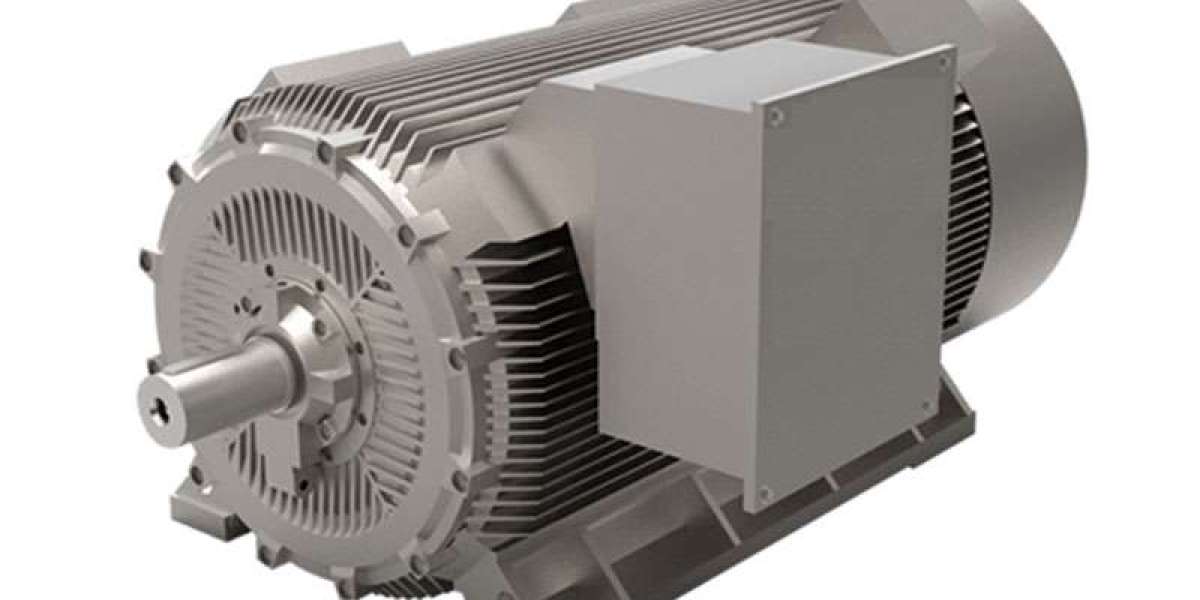The MV electric motor market is a critical segment of industrial machinery, powering essential processes in industries like manufacturing, mining, oil & gas, and utilities. As industries push for higher energy efficiency and automation, MV electric motors are evolving with smart technologies and advanced materials. However, despite the market’s steady growth, several challenges hinder its expansion. From supply chain disruptions to regulatory constraints, the MV electric motor market faces significant hurdles that manufacturers, suppliers, and end-users must navigate.
1. Supply Chain Disruptions and Raw Material Shortages
The global supply chain crisis has severely impacted the production of MV electric motors. The reliance on materials like copper, aluminum, and rare earth elements for motor components has led to price volatility and supply bottlenecks.
- Copper Prices: A crucial component in electric motor windings, copper prices have been fluctuating due to geopolitical tensions and mining disruptions.
- Semiconductor Shortages: The rise of smart and energy-efficient MV motors has increased dependency on power electronics and semiconductor chips, which are still facing global shortages.
- Logistics Issues: Rising freight costs, port congestions, and transportation delays have extended lead times for motor manufacturers.
Solution: Diversifying supplier networks, investing in local production, and leveraging alternative materials like aluminum for windings can mitigate these challenges.
2. Stringent Energy Efficiency Standards and Regulations
Governments and regulatory bodies worldwide are pushing for stricter efficiency standards to reduce energy consumption and carbon emissions. The IE3, IE4, and upcoming IE5 motor efficiency classifications have increased the complexity of compliance for manufacturers.
- High R&D Costs: Developing high-efficiency motors requires significant investment in research and development, raising production costs.
- Regulatory Differences: Compliance varies across different regions, creating challenges for global manufacturers operating in multiple markets.
- Retrofitting Challenges: Older industrial setups struggle to accommodate modern, high-efficiency motors due to infrastructure constraints.
Solution: Manufacturers must embrace advanced motor designs, smart sensors, and AI-driven monitoring systems to enhance efficiency while maintaining cost-effectiveness.
3. Rising Demand for Smart and Connected Motors
The shift toward Industry 4.0 and automation is increasing the demand for smart MV electric motors with remote monitoring, predictive maintenance, and IoT capabilities. While this shift presents opportunities, it also brings challenges:
- Integration Complexities: Industries with legacy systems struggle to integrate digitalized electric motors into existing infrastructures.
- Cybersecurity Threats: Connected motors are vulnerable to cyberattacks, posing risks to industrial operations.
- Cost Barriers: High-tech motors come at a premium, which small and mid-sized businesses (SMBs) may find unaffordable.
Solution: Companies need to adopt cybersecurity measures, develop cost-effective smart motor solutions, and provide scalable retrofitting options for older systems.
4. Market Competition and Price Pressures
The MV electric motor market is highly competitive, with established players and new entrants battling for market share. Challenges include:
- Price Wars: Intense competition leads to aggressive pricing strategies, affecting profit margins.
- Counterfeit Products: The presence of low-quality, counterfeit motors in the market undermines the reputation of genuine brands.
- Differentiation Struggles: Many manufacturers face difficulties in differentiating their products, making it harder to command premium prices.
Solution: Investing in brand reputation, after-sales service, and technological innovations can help companies stand out in a crowded market.
5. Skilled Labor Shortage and Workforce Development
The industry is experiencing a shortage of skilled labor, particularly in areas like motor design, maintenance, and digital transformation. Key issues include:
- Aging Workforce: Many skilled engineers and technicians are retiring, creating a talent gap.
- Lack of Training Programs: Insufficient investment in training programs leaves industries struggling to find qualified workers.
- Technological Evolution: The rapid advancement in motor technology means that traditional expertise is becoming obsolete.
Solution: Companies must collaborate with technical institutes, universities, and vocational training centers to develop talent pipelines and upskill existing employees.
Conclusion
The MV electric motor market is at a crucial crossroads, balancing technological advancements, regulatory challenges, and supply chain disruptions. To sustain growth, industry players must invest in innovation, streamline operations, and embrace sustainability. Addressing these market challenges proactively will not only drive competitiveness but also shape a more resilient and future-ready industry.








